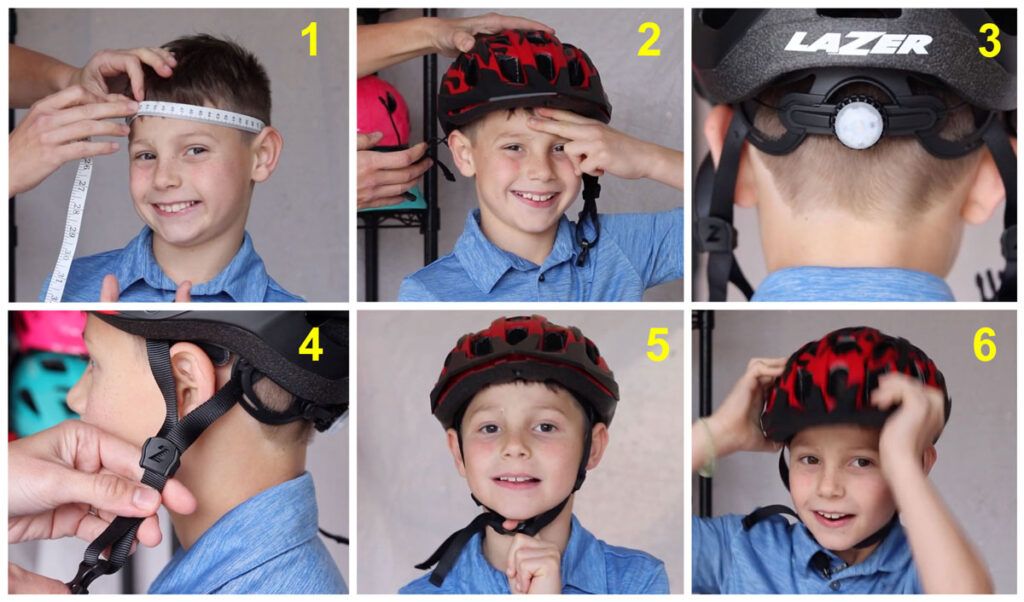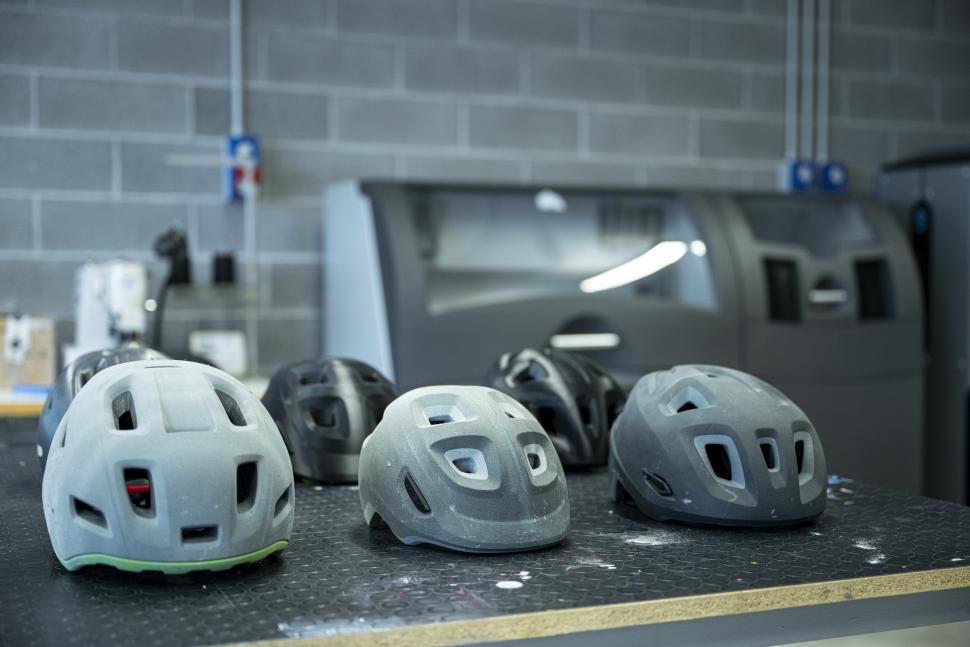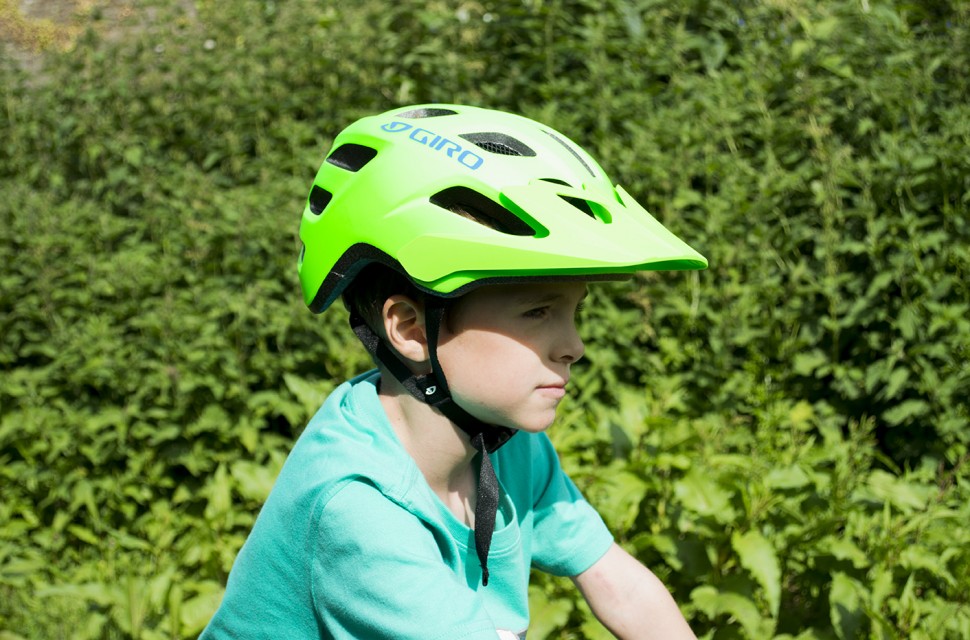tl;dr: To choose a bike helmet, ensure it fits snugly, has adequate ventilation, meets safety standards (e.g., CPSC, EN-1078), and suits your intended cycling style and preferences.

Choosing the right bike helmet is crucial for your safety while cycling. With so many options available, it can be overwhelming to find the perfect fit. In this article, we will provide you with a comprehensive guide on how to choose a bike helmet that meets your needs and ensures maximum protection.
From safety certifications to proper fit, ventilation, padding, weight, and additional features, we will cover all the essential factors to consider. So, let’s dive in and find the perfect helmet for your cycling adventures.
Consider the helmet’s safety certifications

When choosing a bike helmet, safety should be your top priority. Look for helmets that meet the safety standards set by the Consumer Product Safety Commission (CPSC) or the American Society for Testing and Materials (ASTM).
These certifications ensure that the helmet has undergone rigorous testing and meets the necessary safety requirements.
Determine the right helmet size

To ensure a proper fit, it is essential to determine the right helmet size. Measure your head circumference using a flexible tape measure, positioning it just above your eyebrows and around the widest part of your head. Refer to the manufacturer’s size chart to find the appropriate helmet size based on your measurement.
Here’s a table outlining how to choose a bike helmet based on different cycling styles:
| Cycling Style | Key Considerations for Helmet Selection |
|---|---|
| Road Cycling | Opt for a lightweight, aerodynamic helmet with good ventilation and MIPS technology for added safety. |
| Mountain Biking | Choose a durable, well-ventilated, full-face or open-face helmet with added coverage and protection for rough terrains. |
| Commuting | Prioritize safety and visibility by selecting a helmet with integrated lights, reflective elements, and commuter-friendly features like a built-in visor. |
| BMX | Select a sturdy, full-face helmet designed for BMX with adequate ventilation and enhanced protection for high-impact riding. |
| Triathlon/Time Trial | Opt for an aerodynamic, teardrop-shaped helmet designed to minimize drag and provide efficient airflow for speed during triathlons or time trials. |
| Recreational | Choose a well-ventilated, comfortable helmet with an adjustable fit suitable for casual or leisurely rides. |
| Track Cycling | Go for a highly aerodynamic, lightweight helmet without a visor, designed to reduce air resistance during velodrome races. |
Consider the specific requirements and safety features associated with each cycling style to choose a helmet that best suits your needs and enhances your cycling experience.
Check for proper fit and adjustability

A well-fitting helmet is crucial for optimal protection. When trying on a helmet, make sure it sits level on your head and covers your forehead without obstructing your vision. The helmet should feel snug but not too tight. Adjust the straps and retention system to achieve a secure and comfortable fit.
| Head Circumference (in inches) | Helmet Size | Fit Description |
|---|---|---|
| Below 20.5 | Extra Small (XS) | Snug fit, suitable for young riders or those with small heads. |
| 20.5 – 21.75 | Small (S) | Comfortable fit for smaller adult heads. |
| 21.75 – 23.25 | Medium (M) | Average head size, fits most adult riders. |
| 23.25 – 24.75 | Large (L) | Larger head size, providing a comfortable fit for many riders. |
| 24.75 – 26.0 | Extra Large (XL) | Suitable for riders with above-average head size. |
| Above 26.0 | XX-Large (XXL) | Accommodates very large heads comfortably. |
It’s essential to measure your head circumference and choose the appropriate helmet size to ensure a secure and comfortable fit while cycling. Always refer to the manufacturer’s sizing guidelines for the specific helmet brand you are considering.
Consider the helmet’s ventilation
Cycling can be an intense activity, causing you to sweat. Look for helmets with adequate ventilation to keep your head cool and comfortable during your rides. Helmets with multiple vents allow for better airflow, preventing overheating and ensuring a pleasant riding experience.
Choose a helmet with the right type of padding

Padding plays a crucial role in providing comfort and impact absorption. Opt for helmets with removable and washable padding, as it allows you to maintain hygiene and freshness. Additionally, consider helmets with moisture-wicking properties to keep sweat away from your skin.
Consider the helmet’s weight and comfort

A lightweight helmet can significantly enhance your comfort while cycling. Choose a helmet that feels light on your head, reducing strain and fatigue during long rides. Additionally, look for helmets with adjustable straps and a comfortable chin strap to ensure a secure and comfortable fit.
Consider additional features and accessories

Some helmets come with additional features and accessories that can enhance your cycling experience. Look for helmets with built-in visors to shield your eyes from the sun or rain. Reflective elements on the helmet can improve visibility, especially during low-light conditions, adding an extra layer of safety.
Try on different helmet brands and models

Every individual has a unique head shape and size, so it’s essential to try on different helmet brands and models to find the best fit. Visit a local bike shop and try on various helmets, adjusting them to ensure a secure and comfortable fit. Take your time to find the helmet that feels right for you.
Here are some popular cycling helmets, categorized by type that may give you some ideas:
| Type | Helmet Model | Description |
|---|---|---|
| Road Cycling | Giro Aether MIPS | High-performance helmet with MIPS technology for road cyclists seeking aerodynamics, ventilation, and safety. |
| Specialized S-Works Prevail | Lightweight, aerodynamic helmet favored by road cyclists for its exceptional ventilation and comfort, featuring MIPS technology. | |
| Mountain Biking | Bell Super Air R MIPS | Versatile helmet suitable for both trail and enduro mountain biking, known for its MIPS system, adjustable visor, and excellent ventilation. |
| Giro Montaro MIPS | All-mountain and enduro-focused helmet with MIPS technology, featuring a deep coverage design, excellent ventilation, and a secure fit. | |
| Commuting | Lumos Matrix | Smart helmet with integrated LED lighting, ideal for commuters, providing increased visibility and safety on the road. |
| Thousand Chapter MIPS | Stylish urban helmet with MIPS technology and a vintage-inspired design, offering safety and comfort for daily commuting. | |
| BMX | Fox Racing Proframe | Full-face helmet designed for BMX riders and downhill enthusiasts, combining protection, ventilation, and a lightweight design. |
| Troy Lee Designs A1 MIPS | All-around helmet for BMX and mountain biking, featuring MIPS technology, optimal ventilation, and a customizable fit for enhanced safety. | |
| Triathlon/Time Trial | Giro Aerohead MIPS | Aerodynamic, time trial helmet designed to minimize drag, with MIPS technology and a magnetic visor for optimal performance in triathlons. |
| Rudy Project Boost 01 | High-performance triathlon helmet with aero design, offering excellent airflow and an easily adjustable fit for optimal aerodynamics. | |
| Recreational | Schwinn Thrasher | Budget-friendly helmet suitable for casual cycling, featuring a versatile design, ample ventilation, and an adjustable fit for comfort. |
| Giro Register MIPS | Affordable helmet with MIPS technology, suitable for recreational riders, providing impact protection and comfort with a modern design. | |
| Track Cycling | Kask Bambino Pro | Aerodynamic, time trial helmet designed for track cycling, featuring a sleek profile, optimal ventilation, and a visor for reducing air resistance. |
| Lazer Wasp Air | Aero helmet with an innovative design for track and time trial cycling, offering a balance of aerodynamics, ventilation, and a secure fit. |
These helmets are popular within their respective categories and offer a range of features to cater to different cycling needs and preferences
Conclusion
Choosing the right bike helmet is crucial for your safety and comfort while cycling. Consider the helmet’s safety certifications, determine the right size, check for proper fit and adjustability, evaluate ventilation, padding, weight, and additional features.
By following these tips and trying on different helmets, you can find the perfect helmet that meets your needs and ensures a safe and enjoyable cycling experience. Remember, your helmet is your most important piece of protective gear, so choose wisely and ride with confidence. Stay safe!
FAQ
-
How do I choose a good bike helmet?
When choosing a bike helmet, consider factors such as fit, safety certifications, ventilation, and comfort. Look for a helmet that fits snugly on your head without being too tight or too loose. It should sit level on your head and cover the forehead. Check for safety certifications such as CPSC, ASTM, or Snell. Ventilation is important to keep your head cool during rides. Lastly, try on different helmets to find one that feels comfortable and suits your riding style.
-
Does the type of bike helmet matter?
Yes, the type of bike helmet does matter. There are different types of bike helmets designed for specific activities such as road cycling, mountain biking, commuting, or BMX riding. Each type of helmet offers specific features and protection tailored to the intended use. It’s important to choose a helmet that matches your riding style and provides the necessary safety features for your chosen activity.
-
Is it better to size up or down on a bike helmet?
It is generally recommended to size up on a bike helmet if you are between sizes. A helmet that is too tight can be uncomfortable and may not provide adequate protection. However, it’s important to note that each helmet brand and model may have slightly different sizing, so it’s best to refer to the manufacturer’s sizing guide for accurate measurements. Trying on different sizes and adjusting the helmet’s fit system can help ensure a proper and secure fit.
-
What is the difference between a riding helmet and a bike helmet?
A riding helmet and a bike helmet serve different purposes. A riding helmet, also known as an equestrian helmet, is specifically designed for horseback riding and provides protection for the head in case of falls or impacts while riding horses. On the other hand, a bike helmet is designed for cycling activities and offers protection for the head during bike rides. The two types of helmets have different safety standards and features tailored to their respective activities.
Originally posted 2023-03-07 10:54:11.

